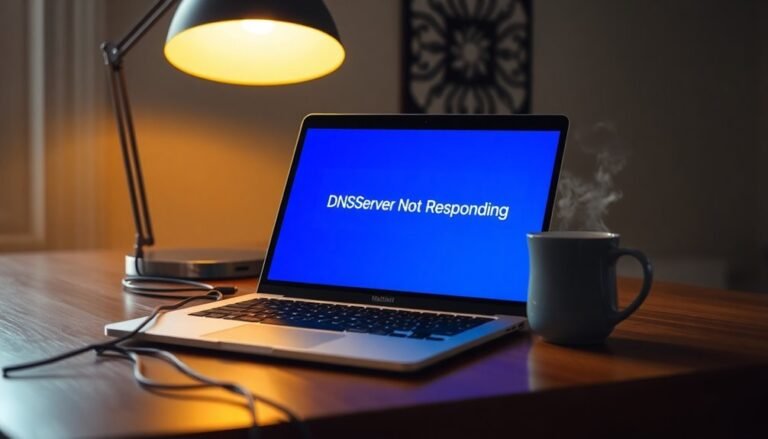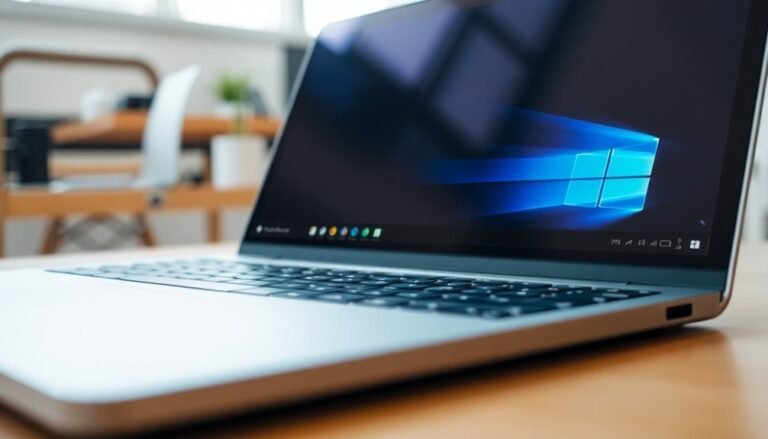Windows Restart Very Slow: Fix Slow Windows Restart Issues
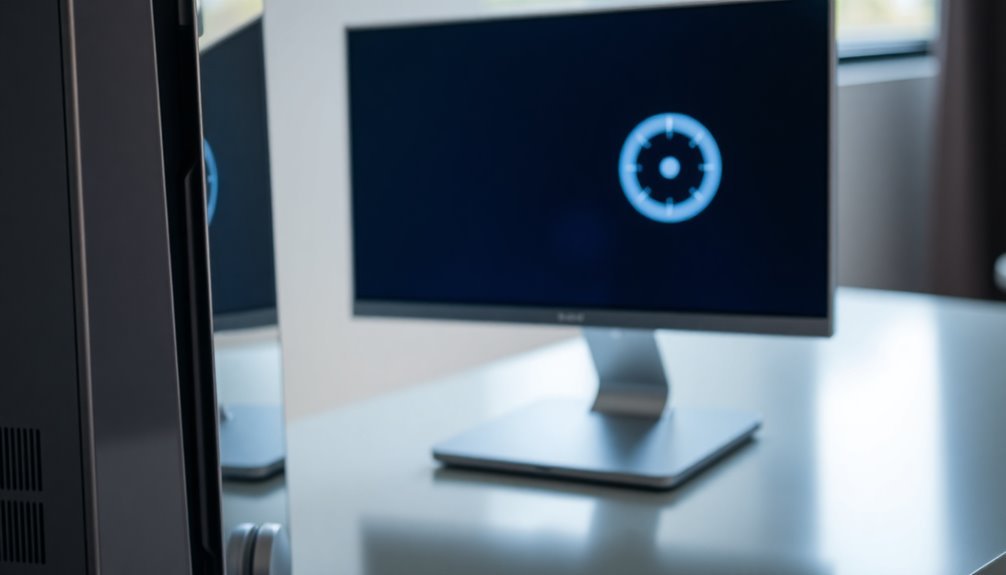
If your Windows restarts are painfully slow, start by disabling unnecessary startup apps in Task Manager. Cleaning out temporary files with Disk Cleanup can also help improve restart times.
Check for malware using your antivirus software. Running System File Checker (SFC) will repair any corrupted system files that might be causing delays.
Upgrading to an SSD and increasing your RAM can dramatically boost your restart speed. If issues persist, consider disabling Fast Startup in Power Options.
You’ll discover more tailored fixes and advanced troubleshooting tips ahead.
Common Causes of Slow Windows Restart
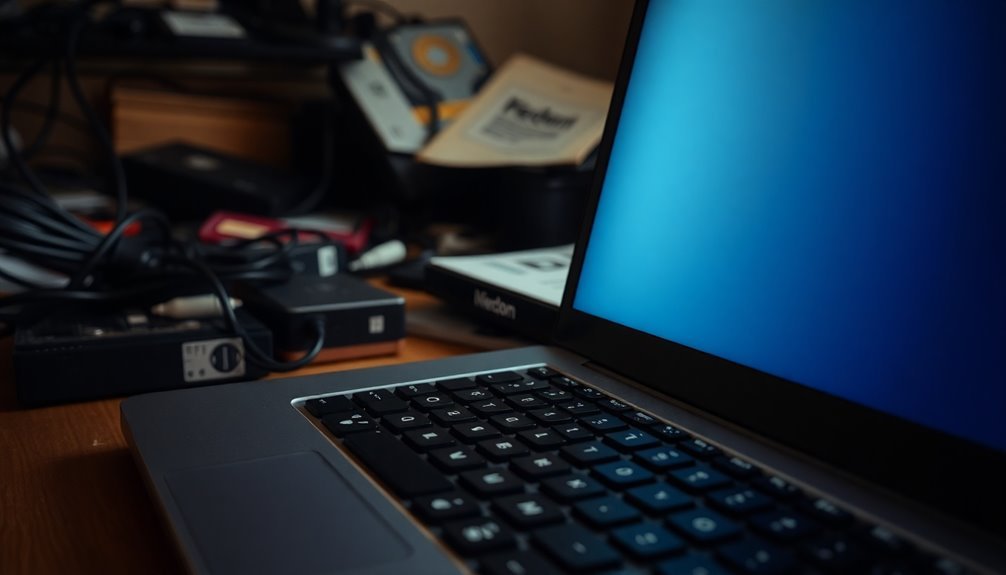
Common Causes of Slow Windows Restart and How to Fix Them
Is your Windows computer taking too long to restart? Slow Windows restart issues can be caused by several factors that affect system performance. Understanding these common causes can help you speed up your PC and improve restart times.
1. System File Corruption and Missing Files
Corrupted or missing system files can force Windows to work harder during restarts, significantly slowing down the process. Running tools like SFC (System File Checker) can help repair these files and improve restart speed.
2. Bloated Windows Registry
An overloaded or fragmented registry can cause delays during reboot. Cleaning and optimizing the Windows registry with trusted software can help streamline the restart process.
3. Disk Fragmentation and Low Disk Space
Traditional hard drives with fragmented files cause inefficient file access, increasing restart time. Additionally, low disk space limits Windows’ ability to manage resources effectively. Regularly defragment your HDD and free up disk space to boost restart performance.
4. Accumulated Temporary Files
Temporary files and cache buildup can slow down Windows restart. Use Disk Cleanup or third-party tools to remove unnecessary files and speed up reboot times.
5. Malware and Viruses
Malware infections can hijack system resources and interfere with shutdown and restart procedures. Running a full antivirus scan and using malware removal tools can eliminate threats causing slow restarts.
6. Recent Windows Updates
Windows updates often run installation processes during restart, which can prolong reboot times—especially if storage is limited or compatibility issues arise. Ensure your system is up-to-date and has enough free storage to minimize delays. Sometimes, background processes related to updates may also continue to run after a restart, further impacting system speed.
7. Hardware Limitations
Insufficient RAM, aging hard drives, and outdated drivers can create bottlenecks that slow down restarts. Upgrading hardware components and keeping drivers updated can enhance system performance.
8. Excessive Background Processes and Third-Party Applications
Too many startup programs and poorly optimized third-party apps can extend restart cycles. Disable unnecessary startup items via Task Manager to speed up Windows restarts.
Managing Startup Programs and Services
How to Manage Startup Programs and Services to Speed Up Windows Restart
To speed up your Windows restart time, managing startup programs and services is crucial. Managing startup programs improves computer performance and convenience. Start by opening Task Manager using Ctrl+Shift+Esc, then navigate to the Startup tab. Here, you can see the startup impact of each program. Disable apps with a High or Medium impact, such as antivirus software and cloud synchronization tools, as these significantly slow down restart speeds.
Another quick way to manage startup programs is through Windows Settings. Go to Settings → Apps → Startup and toggle off unnecessary programs to optimize startup performance.
For advanced control, use the System Configuration tool (MSConfig) by pressing Win+R, typing msconfig, and switching to the Services tab. Make sure to check “Hide all Microsoft services” before disabling third-party services to keep your system stable.
You can also manually manage startup shortcuts by entering `shell:startup` in the Run dialog and removing unwanted items. Some programs may need you to change their auto-start settings directly within the app.
For hidden or stubborn startup entries, advanced users can use third-party utilities like AutoRuns.
Regularly reviewing and optimizing startup programs and services reduces CPU and disk usage during boot, which directly improves Windows restart times. Implement these tips to keep your PC running faster and more efficiently.
Hardware Upgrades to Boost Restart Speed
Top Hardware Upgrades to Speed Up Windows Restart Times
After optimizing your startup programs and services, the next best way to boost your Windows restart speed is through key hardware upgrades. Replacing your traditional hard disk drive (HDD) with a solid-state drive (SSD) delivers the most noticeable improvement.
SSDs have no moving parts, enabling faster read/write speeds and quicker system loading. For even faster performance, consider upgrading to an NVMe SSD that uses M.2 slots, which outpace standard SATA SSDs in data transfer rates.
Increasing your RAM to at least 8GB is another essential upgrade that enhances Windows performance during restart. More memory reduces reliance on slower virtual memory and allows smoother multitasking as your system boots.
Additionally, upgrading to a modern multi-core CPU significantly decreases boot times by handling processes more efficiently. Modern motherboards equipped with UEFI firmware and PCIe 4.0 support also contribute to faster restarts by streamlining hardware initialization and improving data throughput.
Don’t forget to update your graphics card and drivers to ensure compatibility and optimal system responsiveness.
Essential hardware upgrades for faster Windows restart speeds:
- Install a high-speed SSD, preferably NVMe M.2
- Upgrade RAM to 8GB or more for smoother performance
- Switch to a modern multi-core CPU for quicker boot times
- Use a motherboard with UEFI fast boot and PCIe 4.0 support
- Update your graphics card and drivers regularly
Implementing these hardware upgrades will noticeably reduce your Windows restart time and improve overall system responsiveness.
Essential Software and System Maintenance
Optimize Your Windows Restart Speed with Essential Software and System Maintenance
Boosting your Windows restart speed requires more than just hardware upgrades. Regular software and system maintenance plays a vital role in ensuring fast and smooth restarts. Follow these expert tips to enhance your Windows performance:
1. Perform Full Malware Scans Monthly
Use a trusted antivirus program with real-time protection, and keep it updated to safeguard your system from malware that can slow down restarts.
2. Monitor System Performance Daily
Keep an eye on your system’s health by checking for suspicious activity and reviewing event logs weekly to identify hidden errors that may impact restart times.
3. Enable Windows Automatic Maintenance
Activate automatic maintenance in Task Scheduler to ensure routine system tasks run efficiently without manual intervention.
4. Run Weekly Disk Cleanup
Free up disk space by removing unnecessary files and emptying the Recycle Bin. For traditional hard drives, defragmentation can improve access times; SSD users should skip this step.
5. Uninstall Unused Applications Quarterly
Reduce restart overhead by deleting bloatware and applications you no longer use.
6. Keep Windows, Apps, and Drivers Updated Weekly
Enable automatic updates for critical patches to maintain optimal system stability and performance.
7. Manage Startup Programs Weekly
Use Task Manager to disable unnecessary startup applications that slow down boot and restart processes.
8. Close or Uninstall Resource-Heavy Background Apps
Identify and remove apps that consume excessive resources during startup to speed up restarts.
9. Schedule Maintenance During Idle Periods
Perform maintenance tasks when your system isn’t in heavy use to avoid delays during restarts.
By consistently applying these essential software and system maintenance practices, you can ensure your Windows computer restarts quickly and runs efficiently.
Stay proactive to optimize your PC’s performance and enjoy faster boot times every day.
Troubleshooting and Advanced Configuration Tweaks
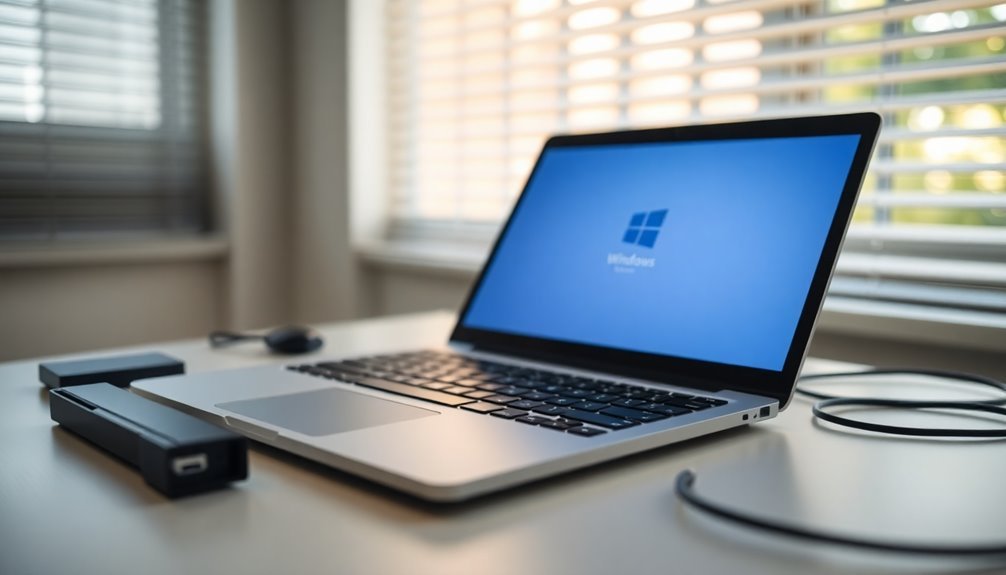
If you’re experiencing slow Windows restarts that routine maintenance can’t fix, it’s time to dive into advanced troubleshooting and configuration tweaks to boost your PC’s performance.
Begin by opening the System Configuration tool (`msconfig`) to optimize your startup settings. Adjust the number of processors used during boot—setting it to a moderate value like 4 can improve restart speed without causing system instability.
Next, hide all Microsoft services and disable unnecessary third-party startup programs to reduce boot load and speed up restarts.
If your Windows restart feels slower than a full cold boot, consider disabling Fast Startup in Power Options. Fast Startup can sometimes create conflicts or delays depending on your hardware configuration, so turning it off may resolve restart issues.
Key advanced troubleshooting tips for faster Windows restarts include:
- Disabling high-impact startup programs via Task Manager to improve boot times
- Manually ending non-essential background processes after restart to free up resources
- Keeping device drivers, especially graphics drivers, up to date to prevent slowdowns
- Using Event Viewer and boot logs to identify specific issues causing restart delays
- Running thorough malware scans even if real-time protection is enabled to eliminate hidden threats
By following these expert tips and configuration tweaks, you can effectively address Windows restart slowdowns and enhance your PC’s overall boot performance.
For more detailed guides on optimizing Windows startup and troubleshooting slow restarts, stay tuned to our blog.
Frequently Asked Questions
Will Reinstalling Windows Completely Fix Persistent Slow Restart Problems?
Reinstalling Windows often fixes slow restarts by removing corrupted files and unnecessary apps, but it won’t solve issues from failing hardware, driver conflicts, or firmware bugs. You’ll need to diagnose hardware and update drivers if problems persist.
Can Dual-Boot Setups Cause Windows Restart to Slow Down?
Of course, dual-boot setups speed everything up—except when they don’t. You’ll often see Windows restarts slow down due to partitioning, bootloader delays, high disk usage, or misconfigured system settings. Careful troubleshooting usually identifies the bottleneck.
Does Using an External Hard Drive Affect Restart Speed?
Yes, using an external hard drive can slow restart speed. You might notice delays if the drive’s large, connected via slow USB, or has power issues. Try faster ports, original cables, and check drive health to improve performance.
Are Registry Cleaners Effective for Fixing Slow Windows Restarts?
Registry cleaners aren’t effective for fixing slow Windows restarts. You won’t see real improvements because registry clutter rarely affects restart speed. Instead, focus on disabling unnecessary startup programs, updating drivers, and scanning for malware to troubleshoot slow restarts.
How Does Bitlocker Encryption Impact Windows Restart Times?
You’ll notice BitLocker slows restarts by checking system integrity, validating firmware, and prompting recovery if changes are detected. You wait for encryption checks, TPM validation, and possible key entry, all adding seconds or minutes to restart times.
Conclusion
If your Windows restart feels more like a leisurely stroll than a quick dash, don’t worry—it’s often just your system taking a moment to gather its thoughts. By managing startup programs, maintaining your software, and considering a hardware refresh, you can nudge it along without fuss. A few thoughtful tweaks can guarantee your PC handles restarts with grace, not reluctance. Take these steps, and you’ll help your system shift smoothly, avoiding unnecessary delays.


